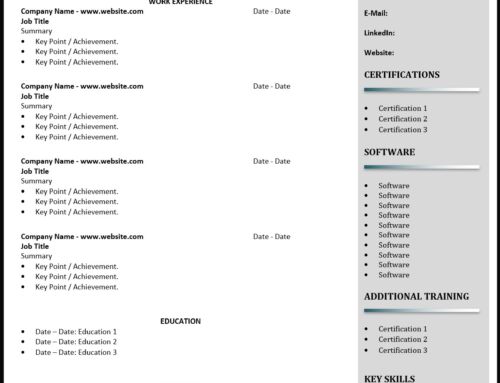Grammar And Punctuation – Quick Reference Sheet
Grammar And Punctuation – Quick Reference Sheet
Quick and simple checks for using the correct grammar and punctuation
This is a live post, so to speak, and it will be updated when new info can be added or improvements can be made.
Page contents:
- ACTIVE VOICE
- COORDINATING CONJUNCTIONS
- PUNCTUATION CATEGORIES
- PAST, PRESENT and FUTURE TENSE
- SENTENCES
- THE FOUR SENTENCE STRUCTURES
- TRADITIONAL PARTS OF SPEECH (Word Categories)
ACTIVE VOICE:
Example:
- Passive voice: The rats were eaten by zombies.
- Active Voice: Zombies ate the rats.
If you can insert “by zombies” after the verb and it makes sense, you have passive voice. (This doesn’t work one hundred per cent of the time, but is a good guide to go by). (Credit for this to Rebecca Johnson @johnsonr)
Example:
- Passive voice: John was chased by zombies. (Sentence correct, but passive voice.)
- Active Voice: Zombies chased (by zombies) John. (This sentence doesn’t make sense if you put ‘by zombies’ after the verb.)
Another Example:
- Passive Voice: The meal was made (by zombies).
- Active Voice: Rita made (by zombies) the meal.
COORDINATING CONJUNCTIONS:
Coordinating conjunctions come between two clauses in order to connect them.
Example: John and Jane walked to the zoo.
Example: His palms were sweaty, but he hid them out of sight.
Use the term FANBOYS to remember the seven conjunctions.
- F: For
- A: and
- N: Nor
- B: But
- O: Or
- Y: Yet
- S: So
PUNCTUATION CATEGORIES:
Stoppers: Full stop or period, comma.
Linkers: Semicolon, colon, dash
Intruders: Comma pair, dash pair, bracket pair
Intoners: Exclamation and question marks
Other Marks
• Apostrophes. (Note: This is used to form contractions and to form the possessive case. It’s never used to form a plural.)
• Hyphens.
• Quotation marks.
• Slash.
• Ellipsis.
PAST, PRESENT and FUTURE TENSE:
- Past
- Present
- Future
All three tenses have four different forms – noted below:
- Simple
- Continuous
- Perfect
- Perfect continuous
| ASPECT/TIME | PAST | PRESENT | FUTURE |
| Simple | Past Simple
(Usually) Verb + ed Watched |
Present Simple
Verb (+s) Watch(es) |
Future Simple
Will + Verb Will Watch |
| Continuous (or progressive) | Past Continuous
was/were + verb-ing was/were watching |
Present Continuous
am/is/are + verb-ing am/is/are watching |
Future Continuous
Will be + verb-ing will be watching |
| Perfect | Past Perfect
has + 3rd form of the verb (past participle) had watched |
Present Perfect
have/has +3rd form of the verb (past participle) have/has watched |
Future Perfect
Will have + 3rd form of web (past participle) will have watched |
| Perfect Continuous | Past Perfect Continuous
had + been + verb-ing had been watching |
Present Perfect Continuous
have/has + been + verb – ing have/has been watching |
Future Perfect Continuous
Will have + been + verb – ing will have been watching |
If you need to check on the different forms of a word – wordhippo has a useful tool to find out: What is the past tense of…
SENTENCES:
A sentence is an independent clause or the combination of independent and dependent clauses.
An independent clause is a group of words that contain a verb and a subject that make a complaint idea/concept.
E.g: The fox jumped over the fence. (Subject is ‘fox’ and ‘verb’ is jumped).
A dependent clause is a group of words that cannot be understood by themselves and are missing the main idea/concept. They require part (an independent clause) of a sentence to make sense.
E.g: The red fox, that was being chased by a hound, jumped over the fence.
The dependent clause here is “that was being chased by a hound” – This in itself does not make sense and needs the independent clause “The red fox jumped over the fence” for it to make sense and form a complete sentence.
To check if a part of a sentence is a dependent or independent clause, simply cover-up either part to see if they make sense by themselves or if they need additional info. (This is known as the Cover-Up Trick).
THERE ARE FOUR SENTENCE STRUCTURES:
1. Simple
2. Compound
3. Complex
4. Compound-Complex
1. Simple sentence: A simple sentence is a single idea and consists of a single independent clause.
E.g: The fox ran away.
2. Compound sentence: A compound sentence is composed of at least two independent clauses with a conjunction. It does not require a dependent clause.
E.g: The fox ran away and it hid in a bush.
3. Complex sentence: A complex sentence has one or more dependent clauses (also called subordinate clauses). But a dependent clause cannot stand as its own, so complex sentences must also have at least one independent clause.
E.g: The fox jumped over the gate, with a majestic stride.
4. Compound-complex sentence: A sentence with two or more independent clauses, plus one or more dependent clauses.
E.g: The fox jumped over the gate, with a majestic stride and a glint of freedom in its eye.
TRADITIONAL PARTS OF SPEECH
1. Noun: Naming words (just person, places or things) (a chance) (Note – Professor Geoffrey Pullum has stated a noun can be more than just a naming word).
2. Pronoun: Noun substitute (their last chance)
3. Verb: Doing or being word (they lost the chance)
4. Adjective: Describes nouns or pronouns (fat chance)
5. Adverb: Describes adjectives, verbs, or other adverbs (a very slim chance; she danced divinely)
6. Article: Specifies definiteness or indefiniteness of a noun (the dance; a good chance)
7. Conjunction: Joining word (a slim chance and a very slim chance)
8. Preposition: A word that positions (at the dance)
9. Interjection: Conveys emotion or sentiment (Wow! What a dance!)






Leave A Comment